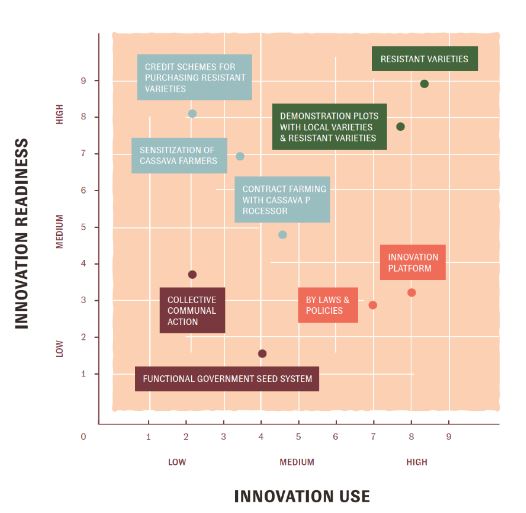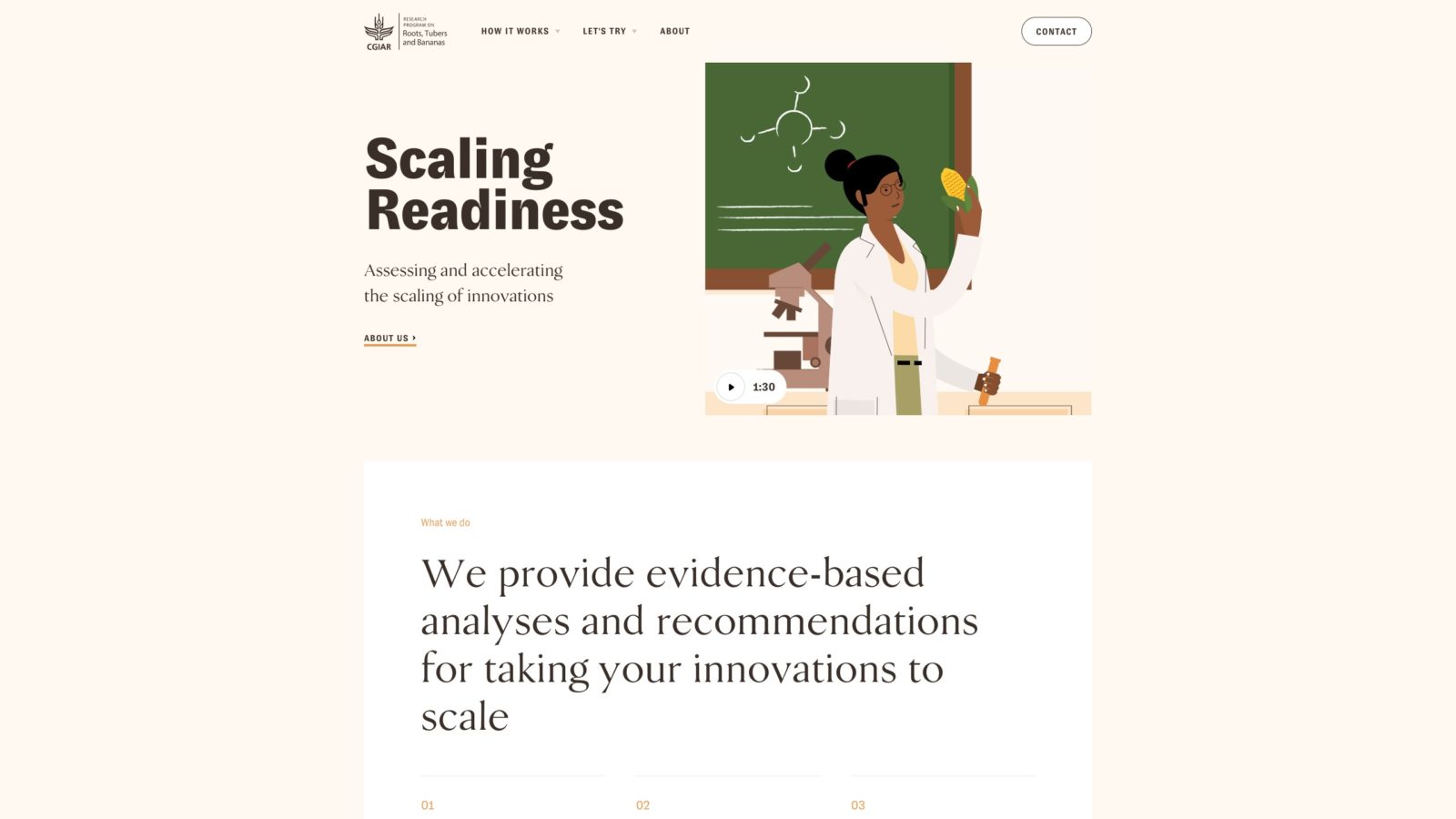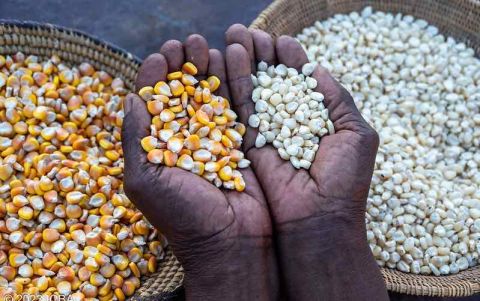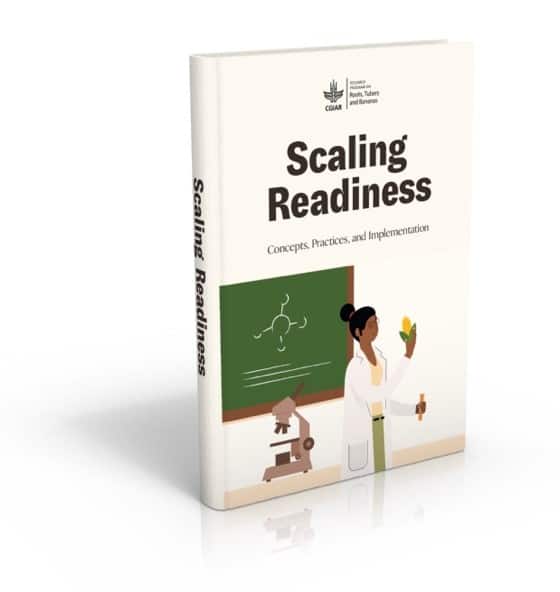
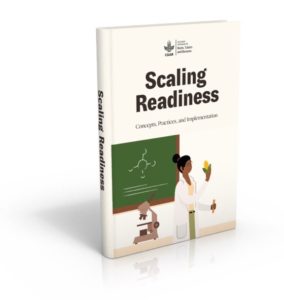 Scaling innovations is one of the biggest challenges facing research and development organizations. The international community invests significant resources in the design and testing of innovations to overcome key challenges such as food insecurity, malnutrition, and environmental degradation. Many of those innovations start as a bright idea that is then developed in a laboratory, to be tested subsequently with end-users. Although initial results and testing are often promising, few lead to real impact at scale.
Scaling innovations is one of the biggest challenges facing research and development organizations. The international community invests significant resources in the design and testing of innovations to overcome key challenges such as food insecurity, malnutrition, and environmental degradation. Many of those innovations start as a bright idea that is then developed in a laboratory, to be tested subsequently with end-users. Although initial results and testing are often promising, few lead to real impact at scale.
For the past three years, a group of dedicated scientists representing Wageningen University and the CGIAR have worked on the design and testing of Scaling Readiness. During this period, Scaling Readiness components contributed to scaling activities of more than 20 projects in 25 countries in Africa, Asia, and Latin America. Some examples include high-quality cassava peels for animal feed in Nigeria, and sweetpotato puree for use in processed products in Uganda, Kenya, and Malawi. Although developed to support the scaling of agricultural innovations, Scaling Readiness principles can be applied to enhance the scaling of innovation in other sectors, including education, health, sanitation, and energy.
“Scaling of innovation is key to achieve Sustainable Development Goals, and Scaling Readiness offers project teams and organizations a toolkit to support the development, implementation, and monitoring of scaling strategies. The strength of Scaling Readiness is its combination of scientific tools and a common-sense approach in making scaling work.” Marc Schut, Senior Innovation and Scaling Scientist – IITA Country Representative for Rwanda
Scaling Readiness unpacks innovations and scores their readiness. This enables the identification of scaling bottlenecks and supports decisions on the kinds of investments, activities, and partnerships that are required to overcome the bottlenecks. The above example presents the Scaling Readiness assessment of an innovation package to combat cassava diseases in Tanzania. The package consists of different innovations that are assessed for their innovation readiness (y-axis) and innovation use (x-axis). Low readiness and use of a functional government seed system is the main bottleneck to scaling in this example.
Scaling Readiness aims to support organizations, projects, and programs in achieving their ambitions to scale innovations. It encourages critical reflection on how ‘ready’ innovations are for scaling and what appropriate actions could accelerate or enhance scaling. It provides scientific tools to support decision making on what are the scaling bottlenecks to address what could be the most cost-effective scaling strategy and which partners to engage.
Through its standardized data collection and analysis approach, Scaling Readiness can be used to monitor a portfolio of innovation and scaling investments. It also supports prioritization, and decisions on the advancement of those innovations that can achieve societal outcomes at scale in the most resource-efficient way.
“We are very proud to have led the development of Scaling Readiness in the CGIAR. Its already showing its promise as we have used it for scaling different innovations ranging from improved cassava peels for animal feed to the triple S sweetpotato seed multiplication technology. We are convinced it’s of broader relevance and this publication will be key to wider use.” Graham Thiele, Director of the CGIAR Research Program on Roots, Tubers and Bananas.
The recently launched Scaling Readiness website provides more information on the concepts, practices and use. It also offers visitors an opportunity to ‘Let’s Try’ Scaling Readiness.
Please visit the Scaling Readiness website or download directly the Scaling Readiness Guidelines for more information.
For more information please contact Marc Schut (m.schut@cgiar.org) or send an email to info@scalingreadiness.org.
This research was undertaken as part of, and funded by, the CGIAR Research Program on Roots, Tubers and Bananas (RTB) and supported by CGIAR Trust Fund contributors.
This blog is written by Marc Schut and Murat Sartas.

